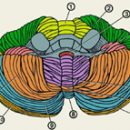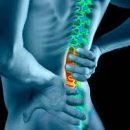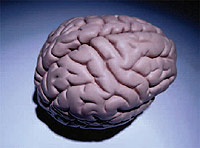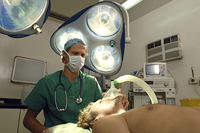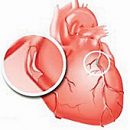Benign intracranial hypertension is a disease accompanied by an increase in intracranial pressure. The reasons for the development of benign intracranial hypertension are not known. The main manifestation of the disease is a headache.
Content
The concept of benign intracranial hypertension
Benign intracranial hypertension is an increased intracranial pressure syndrome without signs of organic lesion of the central nervous system and hydrocyphalia. Other names of this state are also known: idiopathic intracranial hypertension, false brain tumor, intracranial hypertension of neuhroquim genesis.
Benign intracranial hypertension suffer, as a rule, young women having overweight. The main symptom of benign intracranial hypertension is headache. She is accompanied by nausea and vomiting, poles when walking, pain in the eye and some other symptoms. All patients have congestion discs of optic nerves. The reasons for the formation of this syndrome is finally unclear.
The main manifestations of the disease
Initially, the headache may be insignificant or moderate, it stops independently or is easily removed by analgesics. At this stage, patients usually do not appeal to the doctor.
Next, as progression, there is a further increase in intracranial pressure, the intensity of the headache gradually increases, acquires «hypertensive» - Wear a suspension and often achieves significant intensity.
Headaches with benign intracranial hypertension diffuse (common), with maximum soreness in the frontal area, are constant, but there are periods of reduction or an increase in its intensity. Often gaining headaches occurs at night or in the morning after sleep. Particularly enhanced headache with cough, sneezing, head slope down. Many patients complain about the soreness of the movement of eyeballs at this time, pain behind eyeballs. Most patients have headaches are accompanied by nausea and vomiting that is not related to meals. Sometimes vomiting is caused by the movement of the head, occurs with a sharp rise in patients with bed. After the cessation of vomiting, the headache for a short time decreases. In addition, headaches may accompany praying when walking, ringing in the ears, noise in the head, bone in the eyes.
All patients found congestion discs of optic nerves. This is a formidable manifestation of a disease that can lead to a sharp decrease in visual acuity and, ultimately, to blindness.
Diagnosis and treatment of disease
 Diagnosis of the disease is based on the complaints of patients and is aimed primarily on the identification of volume formations (tumor, cyst, etc.) and inflammatory diseases of the brain, neuritis of visual nerves, occlusal processes of liquor conducting pathways.
Diagnosis of the disease is based on the complaints of patients and is aimed primarily on the identification of volume formations (tumor, cyst, etc.) and inflammatory diseases of the brain, neuritis of visual nerves, occlusal processes of liquor conducting pathways.
With benign intracranial hypertension, a low-calorie diet with a reduced content of cook salt is prescribed. In some cases, a decrease in body weight leads to an improvement in the course of the disease. For this purpose, a program to reduce weight and correction of the figure.
Correction of intracranial pressure is carried out with the help of dehydrating preparations and drugs that suppress the secretion of the spinal fluid. The emergence or increase of complications from vision requires timely establishment of indications for neurosurgical intervention. Currently, ventriculo- and lumboperitoneal shunting, decompression of the shell of the optic nerve.
Thus, when headaches that combined with congestive disks of optic nerves, the fat women of young people need to be excluded by syndrome of benign intracranial hypertension. With timely appointment of proper treatment, the forecast is in most cases favorable.

